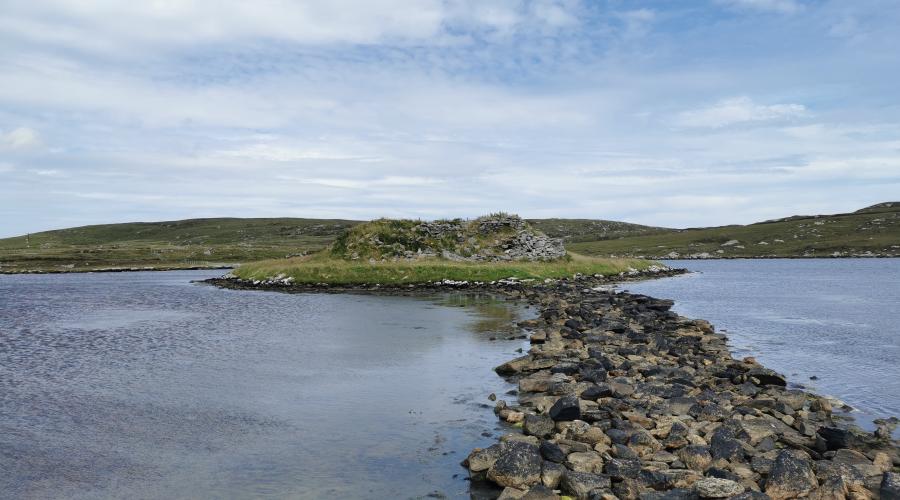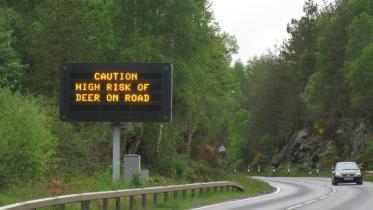
Archaeology revealed the Hebridean way
27 July 2020
Seven archaeological sites along the Hebridean Way and are set to feature in digital reconstructions created by the Uist Virtual Archaeology Project. Viewers experiences will be revolutionised in a project which will harness emerging technologies to better explain the tremendous archaeological assets of this region to locals and visitors alike.
Uist has long been appreciated not only for its scenic grandeur and notable wildlife but for impressive archaeological riches too. In a project which will follow the trail of the Hebridean Way, visitors and the wider public will be introduced to key stories about ancient island life in a new and engaging way.
The Hebridean Way is an ideal focal point. A glorious 156-mile walking route which stretches the length of the Outer Hebrides between Vatersay and Lewis it passes an array of internationally-significant archaeological sites spanning several millennia. Most of these sites have minimal interpretation and there is a feeling that remarkable story of the area is not currently told as well as it could.
That’s all about to change. Making these sites more accessible and better understood is a key aim of the progressive project. As is bolstering the oft fragile economy of the area.
Key to improving the experience is harnessing new technology better. An Augmented Reality App and mixed media exhibition in a local museum will tap into the wide range of existing published and unpublished materials to make for a better presentation of this key tourism attraction. An additional travelling exhibition will be used as a pop-up ‘portal’ to Uist for prospective visitors to get a taste of the heritage offering. There is no doubt that more could be made of the area’s outstanding archaeological legacy, set as it is in achingly beautiful scenery, to make it a ‘must visit’ destination for archaeology and cultural tourism.
So what are the seven sites that will feature? Four are based around sites synonymous with the Machair of South Uist, and two North Uist islet sites feature a Living on the Water theme. The final site is to be confirmed but will be on Benbecula, and will be nominated by children at the local primary school who will also be involved in the visualisation and creation process.
The Living on the Machair element will feature An Doirlinn (a Neolithic settlement), Cladh Hallan (a Bronze Age site), Kildonan Wheelhouse (an Iron Age roundhouse) and Bornais (A Norse settlement). The duo of Living on the Water site are the islet sites at Dun Torcuill, an Iron Age broch and Dun an Sticer (an Iron Age settlement with medieval activity).
Although there are visible remains at some of these sites it is planned that Augmented Reality will allow users to more easily envisage the complete structures and better imagine the sheer scale of these impressive structures. Using an app, visitors will be able to ‘explore’ the site as it may have been via a series of digital reconstructions triggered by features in the landscape, and better appreciate the lives of our ancestors in the existing landscapes.
Without doubt the sites enjoy a stunning setting. Fresh, sweet Hebridean scents to savour along with famous wide views and big skies attract to visitors world-wide. Overhead the sight and sound of an array of fabulous birds is highly likely. It should be stressed that the digital elements of this project will not be available in your home, rather the digital resource kicks in either out onto the sites or in the museum. There is certainly a growing appetite for digital solutions to bring archaeological sites into the home. During lockdown, for example, over three million viewers logged on to watch sunrise and sunset over Stonehenge and that kind of mystical allure certainly applies to the Outer Hebrides.
Given that these seven sites are all well-researched and widely published there is a wealth of material to tap into. However, a lot of the published material is academic in nature, and the focus of this project will be making often scholarly materials as widely accessible as possible. Some of the sites are tricky to access, so having a digital experience will enable far more people to enjoy finding out about significant sites.
The project is sure to be laced with innovative and cutting edge technology which has galvanised a local community long aware that it had a fabulous asset on its doorstep but was perhaps unsure on how best to present it. Now local historical societies, the local authority’s heritage service, schools, and the Uist Community Archaeological Group are just some of the stakeholders who have joined Lews Castle College in developing a plan to maximise the potential of these intriguing sites.
The project will be led by Dr Emily Gal and Dr Rebecca Rennell who are both based at Lews Castle College University of the Highlands and Islands, in association with Comhairle nan Eilean Siar
Dr Rennell said: “Working with our partner Comhairle nan Eilean Siar, we are really excited to be bringing decades of archaeological research at these fantastic sites to the wider public. The team is thrilled to have received funding from the Natural and Cultural Heritage Fund. It will help to realise community benefits, unlock economic potential and improve the visitor experience in a way that conserves and protects the unique natural and cultural heritage recognised across the region.”
That statement is as neat a summary as you could wish for.
In embracing new technology so warmly this project should contribute significantly to promoting Uist and the wider region as a key destination for heritage tourism. And engaging the local community so enthusiastically in this superb local asset is surely great news for the social and economic future of the area.
The Uist Virtual Archaeology Project is also supported by Comhairle nan Eilean Siar, National Lottery Heritage Fund, and Lews Castle College UHI.
The Natural & Cultural Heritage Fund is part of the Scottish Government's current European Regional Development Fund (ERDF) programme, which runs through to 2023. This is one of two ERDF Strategic Interventions led by NatureScot - the other is the Green Infrastructure Fund.
You can follow the European Structural Funds blog for ESF activities, news and updates. For twitter updates go to @scotgovESIF or use the hashtags #ERDF and #europeanstructuralfunds






